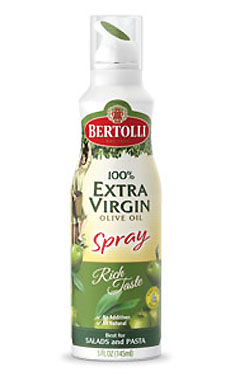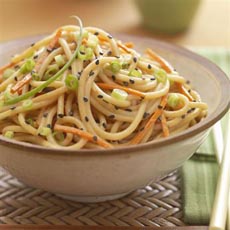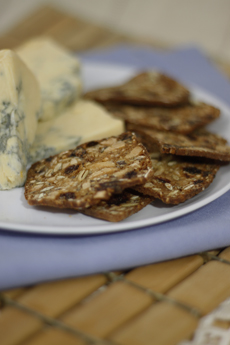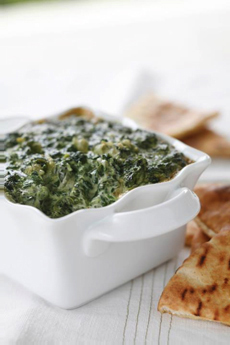|
Some 50 years ago, the debut of the first spray cooking oil, PAM, was a game changer for many cooks. But over the years, the joy of convenience and calorie savings gave way to wariness of the chemical propellants—petroleum, propane and isobutene—said to be 11% of the contents in the aerosol spray can. Today’s tip is to look at the ingredients in the can.
If you’ve never used it, here’s the 411: Cooking spray is applied to frying pans and other cookware to prevent food from sticking. The virtually calorie-free spray spare the calories and saturated fats of butter, oil or other fat because the sprayed layer is so thin.
PAM and the cooking spray brands that followed made other tasks a breeze, too—in the kitchen and beyond. We’ve listed some of the popular uses for cooking spray, below.
In recent years, consumers have become more aware and fussy about the quality of the ingredients they consume. Two companies have decided to lose the controversial chemicals: major brand Bertolli and artisan producer La Tourangelle.
Opting for compressed air to propel 100% oil (instead of 89% oil and 11% chemicals), these products deliver even better taste without the hint of chemicals.
The original sprays were a greasing agent; these new, all natural sprays are also salad spritzers, finishing oils* (especially the top-quality La Tourangelle line) and more—for example, a cholesterol-free, mess-free condiment for corn on the cob. In every case you use far less oil than in another type of application.
BERTOLLI 100% OLIVE OIL SPRAY
The new sprays launch in three varieties:
|
|

Spray away, without chemical propellants. Photo courtesy Bertolli. |
|
Bertolli 100% Classico Olive Oil Spray, to spray directly on the pan before sautéing proteins and vegetables
Bertolli 100% Extra Virgin Olive Oil Spray, to spray onto salads and pastas
Bertolli 100% Extra Light Tasting Olive Oil Spray, for baking tins and preparations that require high heat
You can purchase a six-pack on Amazon.com for $37.52 ($6.25 per five-ounce can), or a three-pack, one of each flavor, for $21.99 ($7.33 per can).
LA TOURANGELLE ARTISAN OIL SPRAYS
La Tourangelle, the California-based artisanal oil company and a NIBBLE Top Pick Of The Week, has launched the first-to-market line of gourmet spray oils that are also all-natural and propellant-free. The company’s top-selling bottled oils are now sprayable:
100% Organic Extra Virgin Olive Spray
Grapeseed Oil Spray
Roasted Pistachio Spray
Organic Canola Spray
Roasted Walnut Oil Spray
Thai Wok Spray
The products are now available online at LaTourangelle.com and will be hitting store shelves soon. The prices range from $6.99 to $9.99 SRP. Consider them as stocking stuffers for friends with good palates.
*A finishing oil is one that is added to cooked food as a condiment, to add flavor and mouthfeel. It is an oil with especially fine natural flavor and aroma that should be enjoyed as a surface accent, and not used for cooking or baking where the nuances will dissipate under heat. It can be used on carpaccio, legumes, porcini mushrooms, pasta, rice and other grains, roasted meats and fish, vegetables and other foods. Fine olive oil can be drizzled atop vanilla ice cream and garnished with a sprinkle of sea salt.
|

Four of the six new artisan-quality spray oils
from La Tourangelle. Photo courtesy La
Tourangelle. |
|
USES FOR COOKING SPRAY
Cooking spray is godsend for anything that calls for greasing, from skillets to bundt pans. Popular kitchen uses include:
Baking & Roasting: baking sheets, baking dishes/casseroles, cake and muffin pans, roasting pans and broiler pans
Cookware, with or without non-stick coating: barbecue grills, frying pans/skillets, gelatin molds, griddles, pots
Food preparation: preventing food from sticking to spatulas, wooden spoons, skewers, measuring cups (especially when measuring sticky things like honey, syrup and agave), food processor blades and blender blades
Adventurous people found uses beyond the kitchen: everything from unsticking doors to preventing fresh nail polish from smudging.
How about using cooking spray for removing dead bugs from your car, and other unconventional uses?
|
COOKING SPRAY HISTORY
PAM, America’s first aerosol cooking spray, was launched in 1961 by entrepreneur Leon Rubin who, with Arthur Meyerhoff, started Gibraltar Industries to market the spray. The name is an acronym for Product of Arthur Meyerhoff. The brand is currently owned and distributed by ConAgra Foods.
With canola oil as its main ingredient, the appeal of PAM was immediate.
For calorie counters, it provided a zero-calorie*, fat-free option for greasing the pan, instead of other fats at 100 calories per tablespoon.
For bakers, it was the way to prevent cakes and muffins from sticking.
For recipes like vegetables, mozzarella sticks and the like, it helped the seasonings to stick thoroughly.
For utensils, coating the inside of a measuring cup with the spray allows sticky substances such as honey to pour out more easily.
Not only did it spawn imitators (Baker’s Joy, Crisco, Emeril, Mazola and Smart Balance, for example), but PAM itself developed eight varieties: Original plus Baking, Butter, Canola Oil, Organic Canola Oil, Grilling, Olive Oil, Organic Olive Oil Professional.
And now, welcome to Cooking Spray 3.0: chemical free.
|
|








